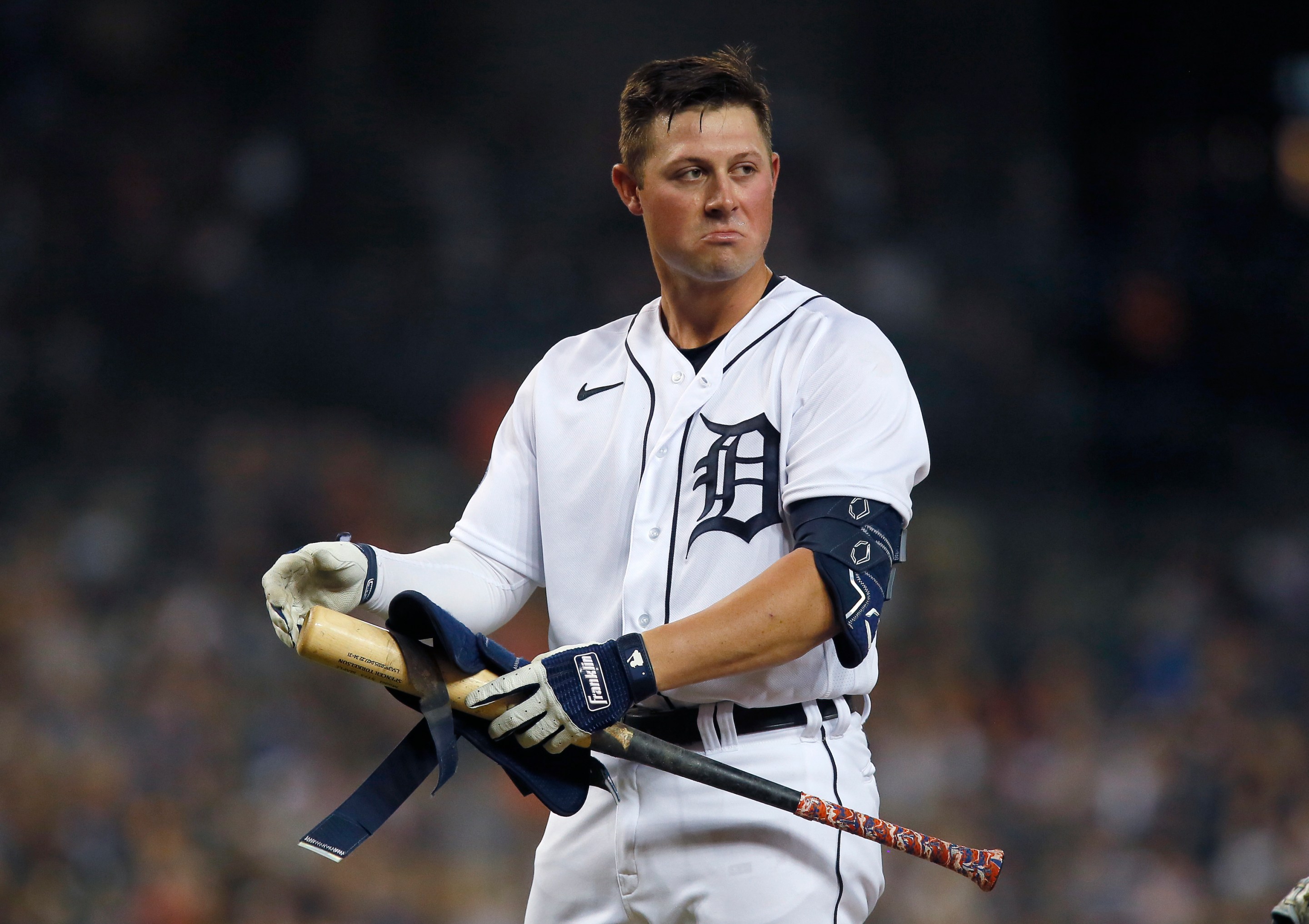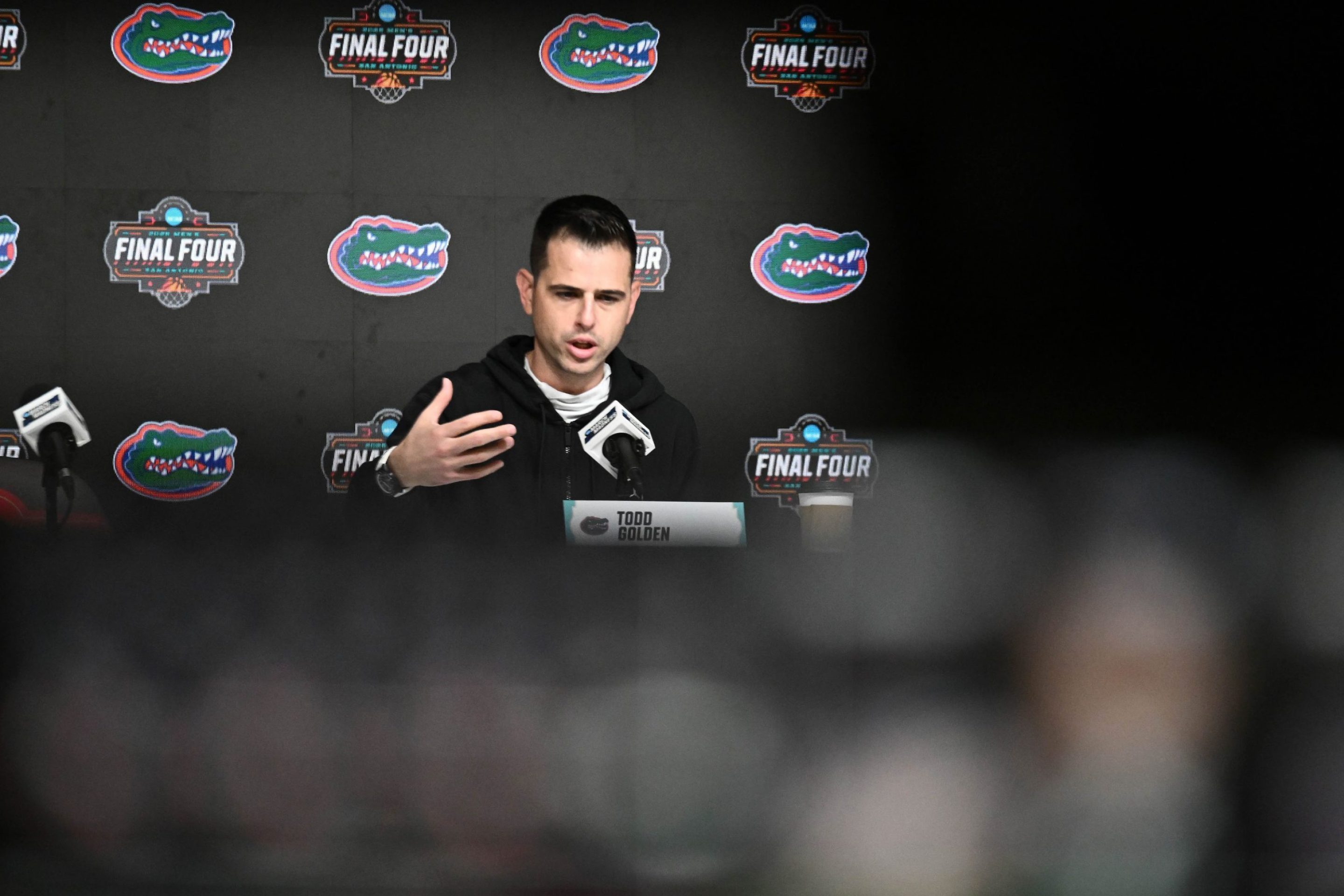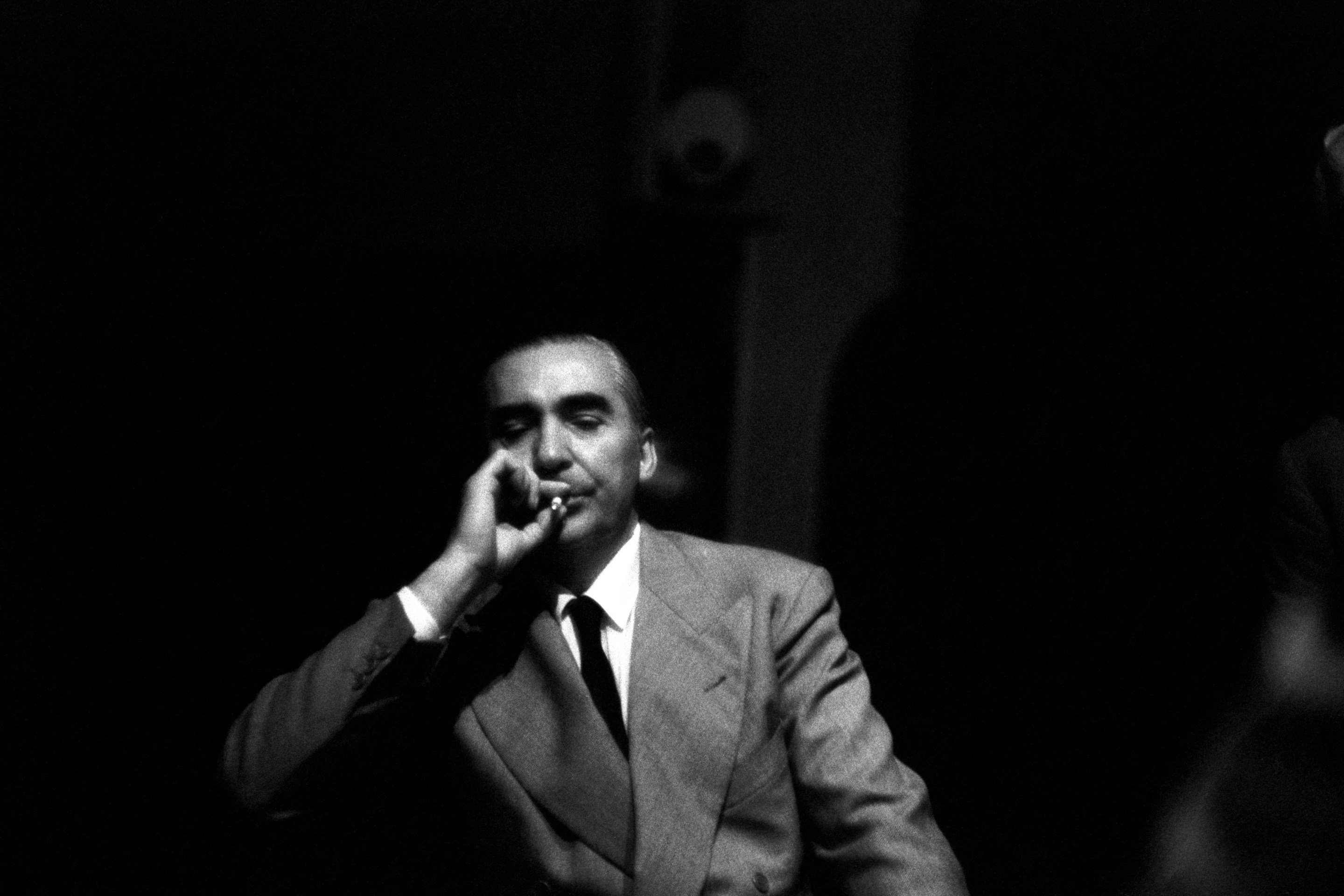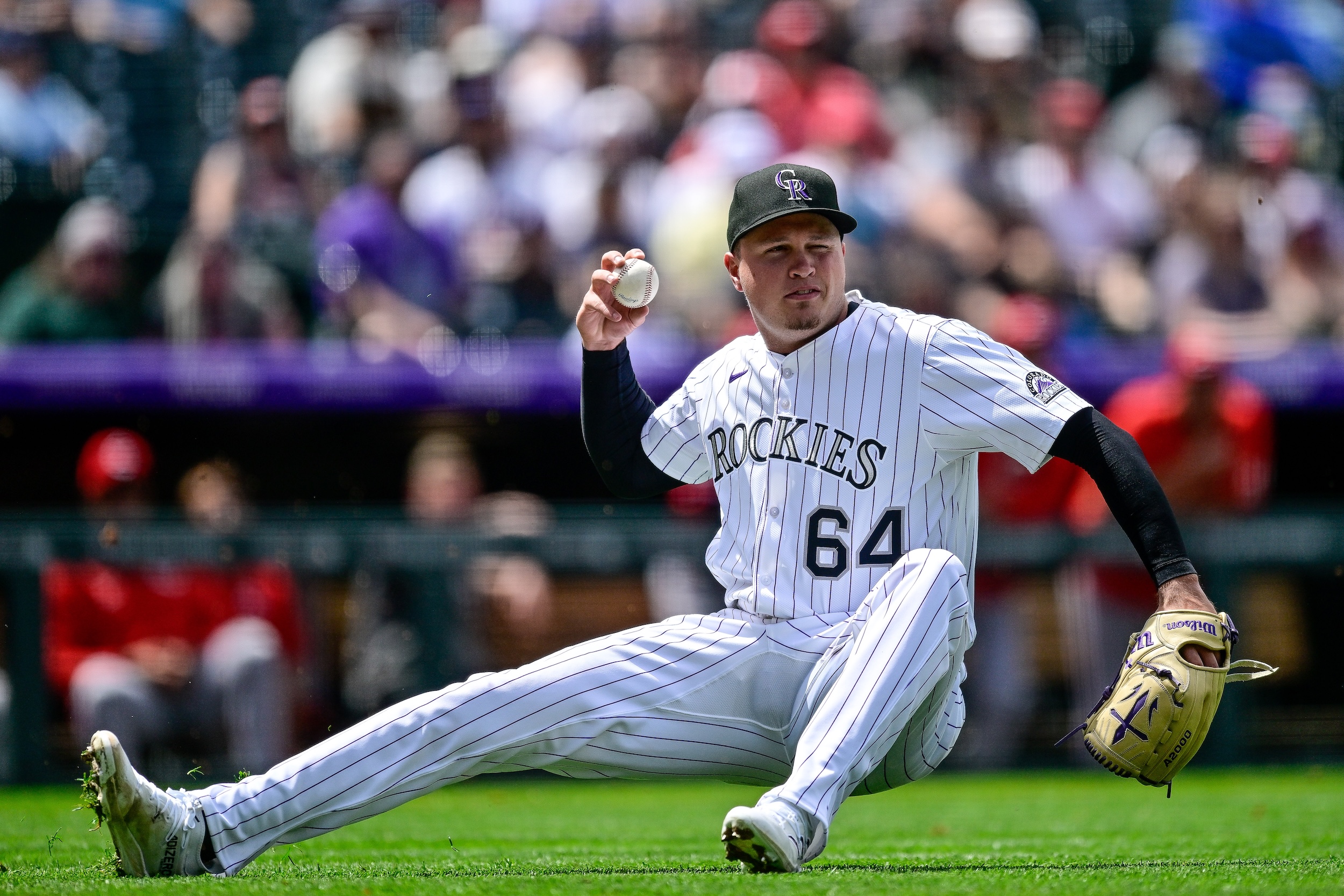Each spring Baseball Prospectus publishes its annual book of projections to help you prepare for the upcoming season. It breaks down each team by including essays by talented writers and individual profiles for more than 2,000+ players, as well as topical essays about the sport at large and a breakdown of the game's top prospects. You can purchase the book directly from the distributor here.
On one of those last glorious days Michigan gives you in October before she remembers herself and turns to ice, I was on the second floor of the team store at Comerica Park, feeling clear-eyed as ever. The Tigers were hosting their not-quite-annual “garage sale,” a chance to comb through years’ worth of surplus inventory and see if you couldn’t dig up some treasure for yourself. (You couldn’t.) Halloween was a few weeks away, and the timing felt appropriate. The whole place recalled some terrible haunted house. Every ghost, every skeleton, every bad decision the Tigers had made in the last 10 years hung there on the clearance racks, ready to spook the unsuspecting. Beware those Jordan Zimmermann jerseys lurking in the corner.
My brother, nine years old the last time the Tigers played postseason games and suddenly a rather tall kid finishing up his college applications, reached into a tote of game-used “mystery baseballs.” He fished out one brown paper lump and turned it over in his palm, like he was inspecting a piece of produce. Encouraged by the result, he added it to our pile of utility infielder shirseys. We paid and stepped back into the sun, proud of the amazing deals we’d found on junk. When my brother read aloud the ball’s provenance later—thrown to an ailing Victor Martínez by an even more ailing Homer Bailey in 2018—he did so the way Charlie Brown tells the other trick-or-treaters he got a rock. It was brave of the Tigers to do this, I thought, to remind us just how much bad baseball we’d watched and forgotten.
Here is how 2022 was supposed to go in Detroit: The Tigers would call up two of baseball’s best prospects, and they would join a 77-win roster already beefed up in the offseason by fine-if-not-great free agents. This was the “flipping the switch” stage of the rebuild. After he hit an Opening Day walk-off double, new Tiger Javy Báez addressed the crowd while a teammate poured cups of water down his head. “Fans,” Báez said, leaning into the microphone, an almost solemn look on his face. “It’s not going to be easy this year. But it’s going to be fun.”
He went 1-for-2. It would end up the most difficult and least fun Tigers season in memory, defined by historically and uniformly low offensive output. Everyone—free agents, hyped rookies, reliable veterans—underperformed. You couldn’t at all tell the difference between the rebuilding team and the one rebuilt. Both teams began their seasons 9-23, but where the 2021 team played respectable, above-.500 baseball afterward, the 2022 team made no such recovery. A six-game win streak in July prompted third-base coach Ramón Santiago to shave his head, in celebration of a turning point. The Tigers won five of their next 20 games.
What the Tigers lacked in power—their 110 home runs were the fewest hit by any team in baseball—they made up for in striking out a lot and never walking. Among their regular statistical neighbors were the Oakland Athletics and Pittsburgh Pirates, teams designed to perform this way. The Tigers settled into something like MLB’s saddest quadrant, which was to be bad without even meaning to. Fans in Detroit had spent the lockout craving resolution, ready to watch competitive baseball again. After one dismal game against the Rangers, I joked to a friend that a second bout of labor strife would be nice.
In team sports, there is the concept of the “burn-the-tape game,” the loss so complete and irredeemable that to reflect on it would be a waste of time. The idea might sit wrong with a sportswriter, inclined to mine meaning from everything. But sportswriting’s for chumps, and burning the tape is a much healthier way to live. By May it was clear that 2022 would not be the Tigers’ year. The early returns were in, and the Everyone Has Their Career-Worst Season At The Same Time strategy, if inventive, had led nowhere. Before the tape could be burned, though, there were 100+ games left to play.
How to stay entertained in the meantime? You could look forward, carve away the lineup filler and limit your focus to the prospects, who seemed to be holding up OK, even if they weren’t hitting like superstars. They called each other best friends and gave aw, shucks interviews. The 22-year-old first baseman Spencer Torkelson began most of his answers with “gosh.” Riley Greene, a 21-year-old center fielder, sometimes got so flustered in front of cameras that he said adorably, egregiously untrue things like, “I’ve been telling a lot of people this offense is really, really good” and “This lineup can put up runs in any scenario at any time.”
You could also look backward, and you were encouraged to. The front office endeavored to wring as much fan goodwill as it could from a 39-year-old Miguel Cabrera. Next to the Comerica Park scoreboard, above the brick wall in left field, an enormous tote board tracked MIGGY MILESTONES. These were sweet until he reached both milestones—he poked a 3,000th hit into right field in April—and the numbers turned odd and unromantic. 3,057 hits. 504 home runs. We’d unwrapped all the gifts, but no one could bear to take down the Christmas tree.
You could forget the offense altogether, though the situation on the other side of the ball wasn’t so rosy either. The list of starting pitchers used reached 17 names at the end of the season. Eduardo Rodriguez disappeared for two months sorting through a marital issue. By the time Tarik Skubal left an August game with “arm fatigue,” it felt only right that the budding ace should join the rest of the rotation on the injured list. Really, he had been cheating fate. The relievers, meanwhile, figured into the season like the crushing twist of an O. Henry story. They formed the elite, eclectic bullpen denied to the best Tigers lineups of the 2010s, and they were wasted now on a team who seldom gave them a lead to hold. Contemporary bullpens draw their share of suspicion for draining baseball of its drama and variety. But the Tigers’ bullpen was the team’s lone source of style. “They all have their own schtick,” said catcher Tucker Barnhart, after showing them off one evening in Toronto. Jason Foley threw fantastic turbo sinkers for automatic groundballs. Joe Jiménez and his lively fastball rebounded from two tragic seasons. Alex Lange wore a sleeveless turtleneck beneath his jersey, even in 90-degree weather, and warmed up to Aerosmith. His two-seamers, like they’d been designed with Pitching Ninja in mind, broke in the shape of question marks at the plate.
The distractions compelled me less than the problem itself did. No baseball player on this baseball team could hit a baseball. What made this problem so difficult was that nothing could be done about it. By me, I mean. One of life’s mandates is to alleviate suffering in any way you can—holding doors open, rustling up spare change. In baseball, you must sit helplessly there as Robbie Grossman takes an unwise cut and shambles back to the dugout.
Of course, you can yell. Some people yelled. They booed Báez’s hopeful flailing. They tweeted that Torkelson should not overthink things, and should be more thoughtful in the batter’s box, and should fix his long swing, and should make his swing less compact. But yelling only effected catharsis, and what I wanted more than that was diagnosis, to understand the problem better, even if I couldn’t solve it. By August, I was hitting-obsessed. I watched slowed-down swings on YouTube and learned to spot hitches from blurry stills. I committed launch angles and exit velos and heat maps to memory. I read books with pleasing little diagrams, all laying out the joints of the human body like furniture parts; they just had to be screwed together the right way.
The back cover of Ted Williams’ guide to hitting promised “THE SECRETS OF HIP AND WRIST ACTION.” But the most interesting chapter, to me, concerned the role of guesswork in the batter’s box. Williams proposed that while the gap between the known and the unknown couldn’t ever be closed, it could at least be made smaller. “You work from a frame of reference, you learn what you might expect in certain instances, and you guess from there,” he wrote. The best hitters honed those frames of reference so that they stepped to the plate needing little luck to go their way. Good things happened to them more often than not.
For months, I told myself the Tigers’ season was tape to be burned. No lessons could be learned from it. Run the whole thing back, and there’s no way it goes this poorly again. It was a comforting belief, and an easy one to hold. An entire language exists to divorce inputs from outputs; there are always BABIP gods and slumps and injury bugs to be blamed. But it isn’t a wholly convincing language. Maybe there is value in the sportswriter’s impulse, to cut through superstition, to tell a story of cause and effect. The Tigers made decisions. Most of the decisions were bad. The decisions produced a range of potential outcomes, and within the range was this one: the team of hopeless free swingers. They were unlucky, sure, in all the normal ways teams are unlucky. Injuries piled up. The plucky stars of the 2021 season faded. But other teams faced those problems and withstood them. That the Tigers couldn’t was no coincidence.
The Athletic’s Ken Rosenthal told this story in a June column about Detroit’s “perfect storm of calamities.” Fundamental failures in international scouting, player development, free agent signings and trades had set the team up perfectly to be felled by any stroke of bad luck. In his story, Rosenthal reported that rival executives doubted general manager Al Avila was “creative and savvy enough to build a consistent winner.” When Avila was fired midseason, after seven years in charge, the only real surprise was the timing. The bill for all the Jordan Zimmermann jerseys had finally come due.
The new president of baseball operations, introduced one afternoon in mid-September, spoke in pithy but unmannered sentences, all with subjects and verbs and beginnings and endings. Thirty-six with a younger face, Scott Harris had kept reassuring company. The names he dropped were impeccable MLB mononyms: Theo. Jed. Farhan. Where Avila had gestured broadly and never quite convincingly at “using more technology,” Harris called himself an “information-first” executive, which sounded wise and interesting, whatever it meant. There were no revelations in his first press conference, just the essential facts of baseball: He believed pitchers should throw strikes. He believed hitters should swing at good pitches. Even so, we oohed and aahed. One night, as he explained OPS+ to the Tigers broadcast booth during an in-game interview, I remembered a friend’s lukewarm appraisal of her sister’s new boyfriend, some perfectly average guy all the exes made seem like a dreamboat.
The state of Major League Baseball is such that Harris’ job, at the helm of a 66-win team, could be called an attractive one. In a thrifty AL Central, half the work is just to try. Tie outputs back to inputs, and suddenly assembling a good baseball team starts to look simple. The shrewdest executive will insist this takes great time and patience, but a Tigers fan knows it doesn’t need to. Whenever the timeline of a rebuild seems daunting and necessarily epochal, it helps to think of the 2006 team: American League champions three seasons after losing 119 games.
When I was younger, that team seemed propelled by a force that could never be replicated. But what was the force, really? Management’s consistent effort. Ownership’s checkbook. Great free agents. Draft picks panning out. A truer story went that the Tigers made decisions. Most of the decisions were good. The decisions produced a range of potential outcomes, and within the range was this one: the team for whom everything went right. In the thrill of the moment, we called the whole thing magic.






